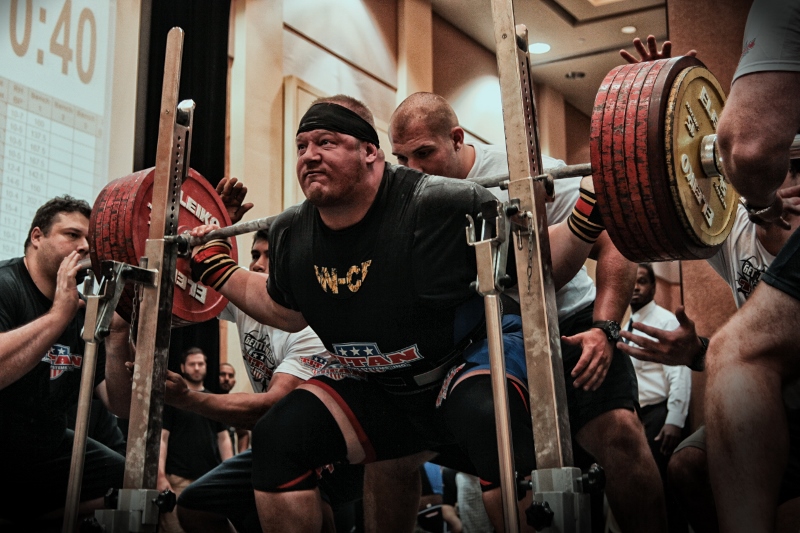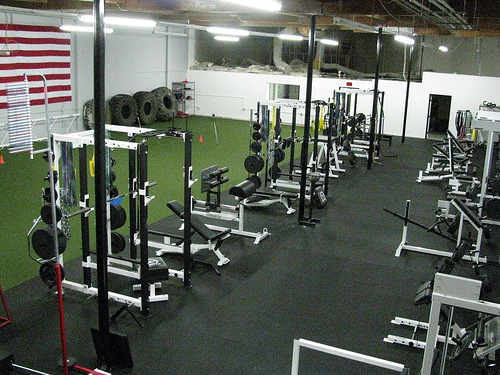Written by Keith Power

Do You Really Understand Elite Sport Performance?
Sport is all about performance, right? It’s all about how you perform on the field, on the court, in the pool or in the gym. Teams or individuals can produce performance excellence or have performance disasters. Increasingly too, we hear the term ‘high performance’. Although you might hear or see the term ‘performance’ referenced all the time, do you really understand what performance is? More importantly, do you know what to do to produce truly elite level performance as an athlete, team, coach or sports administrator?
Over the past 25 years, KPA Elite Performance has studied, researched and worked with hundreds of elite performers in sport, business, the military, performing arts and show business. This led us to develop The KPA Elite Performance Model™, which is a simple, yet powerful way of understanding performance and how to perform like the elite do; in an intense, consistent and sustainable manner.

The basis of our model is that sport performance is made up of six key factors:
1. Performance Culture – the environment in which you perform. It’s the bedrock of performance. This is influenced by your coach, your teammates, training partners, mentors, family and friends. An elite performance culture is one in which we can learn, grow and excel. How often do talented athletes or teams fail because of a poor performance culture?
2. Physical Skills – the physical needs required of your sport or position. It could be speed, power, strength, speed endurance, endurance, agility, mobility and so on.
3. Mental Skills – the mental toughness and winning mind-set required to excel in your sport and/or position. This includes resilience, focus, confidence, the ability to perform under pressure, motivation and physical toughness.
4. Technical Skills – learning the skills required for your sport, role or position. For example, a central defender in soccer needs to be able to pass with both feet, be a strong tackler and be a good a ‘header’ of the ball. A point guard in basketball, needs good distribution/passing skills, good handling skills and the ability to lay up with both hands.
5. Tactical Skills – understanding the ‘X’s and O’s’ of your role, event or sport. A great middle distance runner needs to know their ‘race tactics’. A quarterback needs to know 100 plus plays every game and what play to run and when.
6. Lifestyle Skills – the ability to achieve balance and to manage the challenges of life and sport. It’s the ‘off field’ stuff. This includes organizational skills, sleep management, wellness and nutrition.
How well you are able to execute each these skills has a direct relationship to the outcomes or results you achieve. Put simply, the quality of your technical, tactical, mental, physical and lifestyle skills combined with the quality of your performance culture will dictate success or failure! This model is represented visually below.
The KPA Elite Performance Model™
 Some important things to note about this model
Some important things to note about this model
1. These are skills!
Firstly, these six interconnected performance components are skills. That means they can be learned, developed and nurtured. They are not, “gifts”. They are not something you’ve either got or not, nor are they set in stone. They can be improved.
Even performance culture is a skill. Culture is the product of the way a group of people behave. You can choose to have an elite culture or a debilitative one by the way people around you behave and influence you. Do you have ‘radiators’ or ‘drains’ around you? Radiators are people who exude passion and positivity. Drains are people who suck away energy and are negative influences.
2. Elite performance is doing many things in a great way – at the same time!
Secondly, these six skills do not live in a vacuum; they impact and influence each other. They are like interconnected cogs in a highly tuned machine. Turn one cog and it affects others. If one of the cogs is defective, it affects other cogs.
I’d like to use, as an example, my time as the Head Coach for the British Olympic Bobsleigh (Bobsled) Team to illustrate this point. Like many sports, the difference between winning and losing, racing well and racing badly, can be measured in inches. The difference between the top 10 teams in any Olympic Games, major championship or World Cup event is a matter of hundredths of seconds. The start time then is critical.
Elite-level bobsled athletes need a range of performance skills to produce fast start time.
1) They need to be strong, fast, powerful and agile. (physical skills)
2) They have to have great push technique and must coordinate perfectly the start ‘hit’. (technical skills)
3) They need to know each track inside out to know how to ‘ride’ with the sled. (tactical skill)
4) They have to produce great start times under great pressure. (mental skills)
5) They need to be able to rest and regenerate their minds and bodies and fuel themselves for training and competition. (lifestyle management skills)
6) Finally, an elite bobsled team has a small army of management, coaching, strength and conditioning, sport medicine and sport science staff that support them. That team has to have a shared vision, shared values, mission and goals. (performance culture)
To get that fast start time, it’s not going to happen if you spend all your time in the gym getting strong and powerful but your push technique stinks and you don’t know how to ‘ride’ the sled. The physical cogs here are not integrated with the technical and tactical cogs.
Or you can have great physical skills and be a great technician, but if you can’t manage your life effectively and if you don’t learn the right mind-set to train and compete, then you won’t be an elite performer. Again, the mental skills and lifestyle skills cogs are not in sync with the physical and technical cogs.
Most important of all is the impact of the performance culture. As Head Coach for The Great Britain Olympic Bobsleigh Team, I ensured that, not only was every athlete and team plugged into the importance of the maximization and integration of physical/mental/technical/tactical and lifestyle skills, but there was huge emphasis on creating and sustaining an elite performance culture. Everything was geared to establishing a supportive, positive, accountable, shared culture that would maximize the other five performance skills of our athletes and teams.
The bottom line here is that talent and hard work alone do not produce elite level performance. A great individual or team performance is about maximizing all six performance skills. If one performance cog is weak, it affects the other cogs in the performance machine and that means less than optimal results.
3. Focus on the mental and lifestyle aspects of performance as much as you do the technical, tactical and physical skills
Our research and experience show that typically sport performers, particularly those who compete at a higher level, over-emphasize the importance of physical, technical and tactical skills and spend a disproportionate amount of time operating in these areas.
Not enough time is spent on developing the areas that allow performers to be truly elite and perform at an intense, consistent and sustainable level – the mental and lifestyle skills cogs of performance. These cogs drive the physical, technical and tactical skills cogs.
If you are a strength/power based sport athlete like a weightlifter, bobsledder, football player or thrower, I’m not suggesting that being strong and powerful and having great sport/skill technique isn’t important. I’m saying that, how helpful is an extra 10lbs on your bench press, if you can’t perform under pressure or have a poor lifestyle? Elite sports performers work hard on areas like relaxation, sleep, regeneration, mindfulness, mental preparation, nutrition and hydration for performance, personal management and wellness.
4. We all have individual performance needs
Fourthly, the KPA Performance Model™ recognizes that everyone is different and everyone needs an individualized performance development plan. “One size fits all” just doesn’t work. For example, one performer may need to hone in on improving lifestyle skills like work/life balance and sleep.
Another performer may need to work on mental skills areas such as resilience or confidence, while yet other performers may need to work on different mental skills such as mindfulness, or physical skills like building physical energy and mental preparation. Once size certainly does not fit all when it comes to elite performance.
5. Performance Culture is huge
Finally, never underestimate the importance of Performance Culture. As you will see in the model, culture is the overriding performance component, or cog, that drives all the other cogs.
If you don’t get your personal performance culture right or your teams’ culture is debilitative in some way, this can have a huge negative effect on the ability of individuals or teams to be true elite performers. Culture is where the motivation for change, development and improvement comes from and without it, performance cannot flourish or be sustained.
Back to my bobsleigh example. The Great Britain team was able to produce consistent results, ranking in the top 5 in the world. It outperformed teams with more talent, resources and depth of athletes. Why? Because the Great Britain team worked hard at developing an extremely positive performance culture that was athlete-centered. Many of the nations and teams we competed against had a terrible performance culture, full of athlete/administration/coach in-fighting, selfishness, negativity and self-interest. That crushed performance spirit and undermined their potential.

In Summary
When it comes to Elite Performance in sport, at KPA, we believe the following to be true:
- There isn’t a clear understanding of real elite performance in sport – it is not well-defined or understood by most.
- Performance is usually confused with results or outcomes – performance is sum of the things you have to do in order to get great results.
- Through research and experience, we have established the KPA Elite Performance Model that explains the factors affecting elite sport performance. It consists of six key skills – technical/tactical/mental/physical/lifestyle and culture.
- These elements are skills because they can be learned and are not something set in stone.
- How well you execute these skills directly impacts how successful your performance outcomes are and the results you will get.
- Typically, sports performers can over-emphasise the importance of physical, technical and tactical skills and spend a disproportionate amount of time in these areas.
- The more ‘expert’ we become, generally speaking, the more we need to focus on mental skills, lifestyle skills and our performance culture
- All 6 skills do not live in a vacuum – they all impact and influence each other.
- We are all different and have different performance strengths and weaknesses – elite performance is not one size fits all.
- Finally – we should never underestimate the importance of Performance Culture!
By understanding what human performance is, what human performance skills are, and by measuring, monitoring, managing and enhancing these skills, KPA helps our clients ensure that their key performers and teams can operate at a higher and more sustained level.
We’re talking about what we at KPA like to call SELP – Sustained Elite Level Performance.
Keith Power has a wide and varied array of experience, skills and expertise in the arena of Elite Performance Sport and Business. He has competed in three sports internationally and has the distinction of being the youngest ever person to be a Head Coach at an Olympic Games. He currently works as an Elite Performance Architect, providing sustained elite performance solutions for individuals, teams and organizations. He is also an adjunct professor at John F Kennedy University, Pleasant Hill, California. He has extensive experience in developing high performance sports systems and processes, in delivering coach learning and development support, talent identification and development, leading cutting edge sport science, sports medicine and strength and conditioning programs and is a renowned leader in culture change and change management in sports and business. In sport this has included working with Olympic champions and medallists, top sports administrators and coaches, The University of California – Berkeley, UK sport, the British Olympic Association and top English Premiership Football and Rugby Teams.
He is an AASP certified consultant, has published articles in academic journals in the area of elite performance and has presented research work at international scientific conferences and workshops. Previously, he was a senior executive member of the British Association of Sport and Exercise Sciences (BASES). He is also an advisory board member for Leaders in Performance USA and a member of JFK’s sport psychology advisory board.
Email: [email protected]
M: 510 326 4299
Skype: keithpower26






